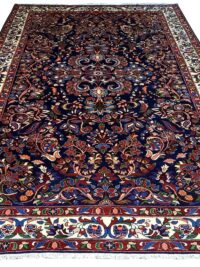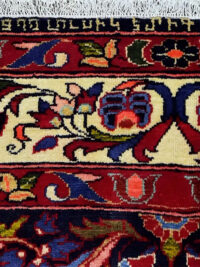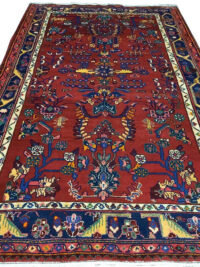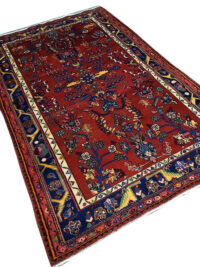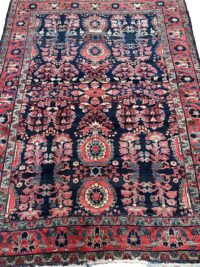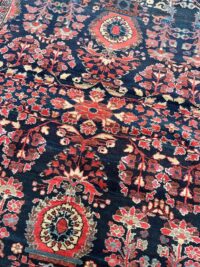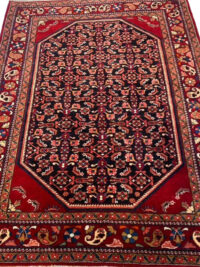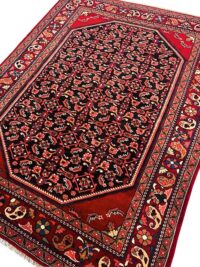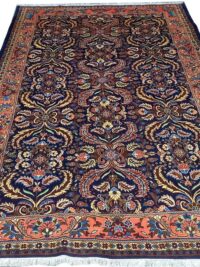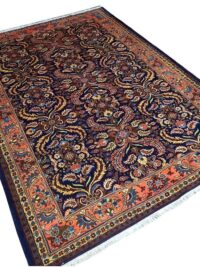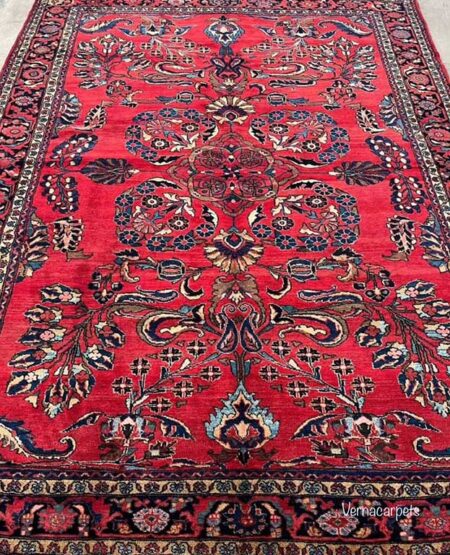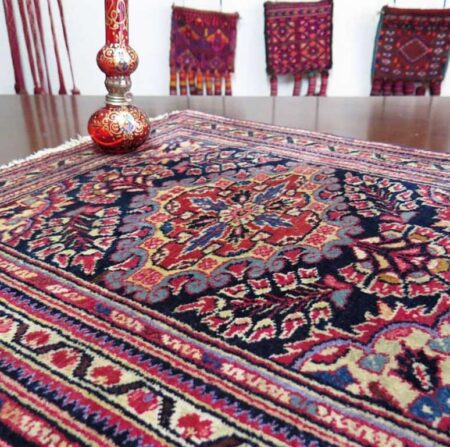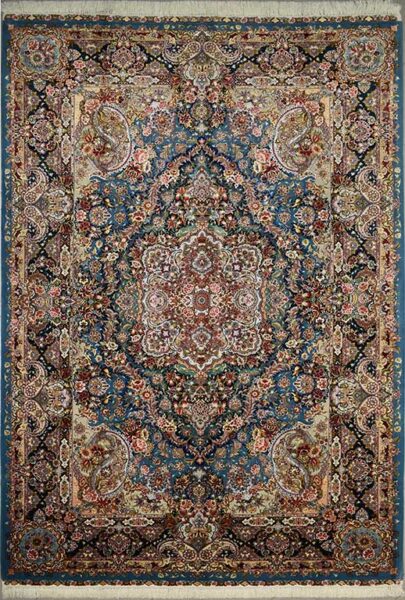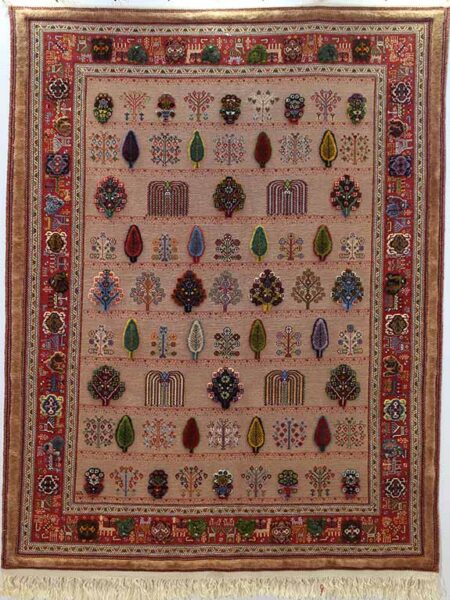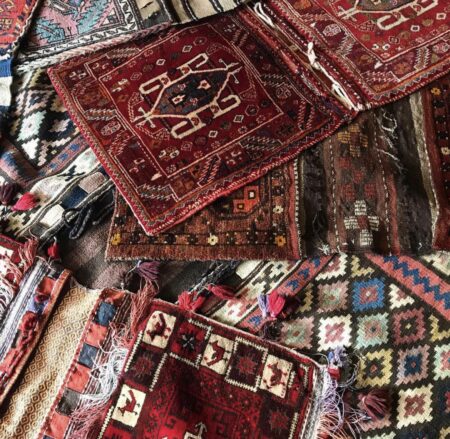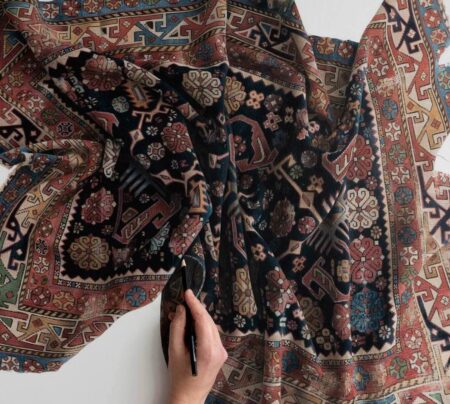
Showing all 5 results
A brief look at Lilian carpet
Lilian is a village in Arak Province, whose carpets are famous all over the world, especially in America. A number of Armenian immigrants who were moved from the north-west to the central regions of Iran by the order of Shah Abbas I settled in the village of Lilian. The people of Lilian had many skills, including agriculture and carpet weaving. They traditionally spun the wool of their sheep and dyed it with natural dyes in a special way, then weaved carpets with them.
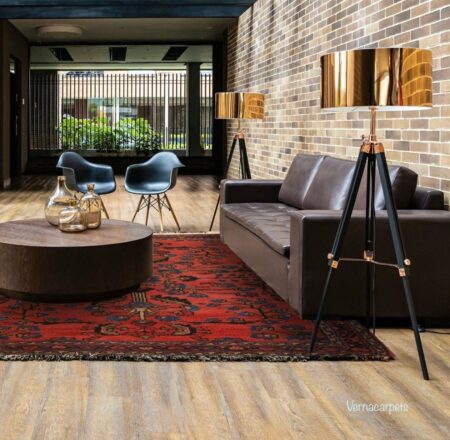
Vegetable dye antique Lilian Persian area rug
Characteristics of Lilian handwoven carpet
- Lilian carpets were woven with Turkish knots, and because in this type of knot, the pile is tied around the warps twice, so the texture of the carpets is very strong and durable.
- One weft was used in each row. Of course, recently two-weft carpets are also woven. The color of the weft is often pink.
- The designs of Lilian and Sarouk carpets are very similar, there is a hidden cross in the medallion of Lilian carpet and there are patterns in the shape of flower bouquets at both ends of the carpet.
- The background color of Lilian carpets is red, which is similar to dark pink. Of course, sometimes a navy background is also seen in Lilian carpets.
Lilian rug.7’8″*10’3″
- The warp and weft of Lilian carpets are made of cotton and the pile is made of sheep wool.
- The carpets of this village are mostly woven in medium size and the common tools are scissors, comb, knife.
Antique Lilian rug, 1920circa
How was Lilian carpets dyed?
Carpet weavers used natural colors found in nature to dye Lilian carpets. People of Lilian used special techniques to dye their wool. The dyers of this village first dyed the wool with root of madder, then put it in old grape wine. This would make the wool brighter and shinier. They put the red wool obtained from madder in dough, and due to the combination with the lactic acid in the dough, the red color turned pink. The rest of the colors were prepared from the leaves of the grape tree and walnut shell and Bengal indigo.
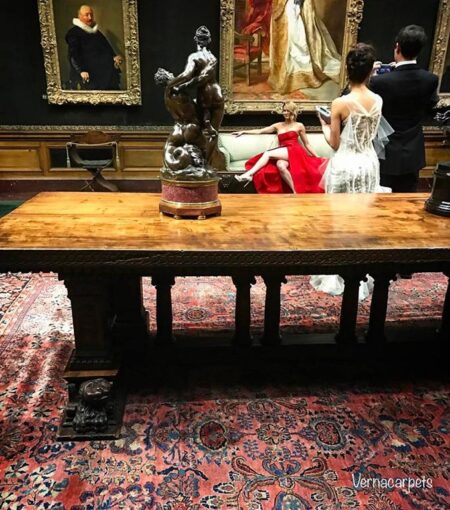
Lilian rug, museum in New York, The Frick collection

